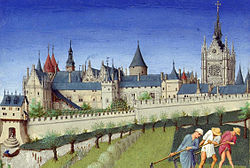Vw-ws-test
This article, Vw-ws-test, has recently been created via the Articles for creation process. The reviewer is in the process of closing the request, and this tag should be removed soon.
WARNING: Draft:Vw-ws-test is 2,598 bytes. If it is not a redirect with only 1 edit in its edit history, this may be a "copy and paste" move. To avoid losing the edit history, administrators should consider merging the history of the AfC draft into this article. Non-administrators should consider placing {{Histmerge|Draft:Vw-ws-test}} at the top of this article before removing this AFC submission template. Reviewer tools: Preload talk Inform author |
vw-ws-test

On 25 August 1944, the city was liberated by the French 2nd Armoured Division and the 4th Infantry Division of the United States Army. General Charles de Gaulle led a huge and emotional crowd down the Champs Élysées towards Notre Dame de Paris, and made a rousing speech from the Hôtel de Ville.[1]

By the end of the 12th century, Paris had become the political, economic, religious, and cultural capital of France.[2] The Palais de la Cité, the royal residence, was located at the western end of the Île de la Cité. In 1163, during the reign of Louis VII, Maurice de Sully, bishop of Paris, undertook the construction of the Notre Dame Cathedral at its eastern extremity.
After the marshland between the river Seine and its slower 'dead arm' to its north was filled in from around the 10th century,[3] Paris's cultural centre began to move to the Right Bank. In 1137, a new city marketplace (today's Les Halles) replaced the two smaller ones on the Île de la Cité and Place de Grève (Place de l'Hôtel de Ville).[4] The latter location housed the headquarters of Paris's river trade corporation, an organisation that later became, unofficially (although formally in later years), Paris's first municipal government.
References
[edit]- ^ Fierro 1996, pp. 242–243.
- ^ Lawrence & Gondrand 2010, p. 27.
- ^ Bussmann 1985, p. 22.
- ^ de Vitriaco & Hinnebusch 1972, p. 262.
This article, Vw-ws-test, has recently been created via the Articles for creation process. The reviewer is in the process of closing the request, and this tag should be removed soon.
WARNING: Draft:Vw-ws-test is 2,598 bytes. If it is not a redirect with only 1 edit in its edit history, this may be a "copy and paste" move. To avoid losing the edit history, administrators should consider merging the history of the AfC draft into this article. Non-administrators should consider placing {{Histmerge|Draft:Vw-ws-test}} at the top of this article before removing this AFC submission template. Reviewer tools: Preload talk Inform author |

